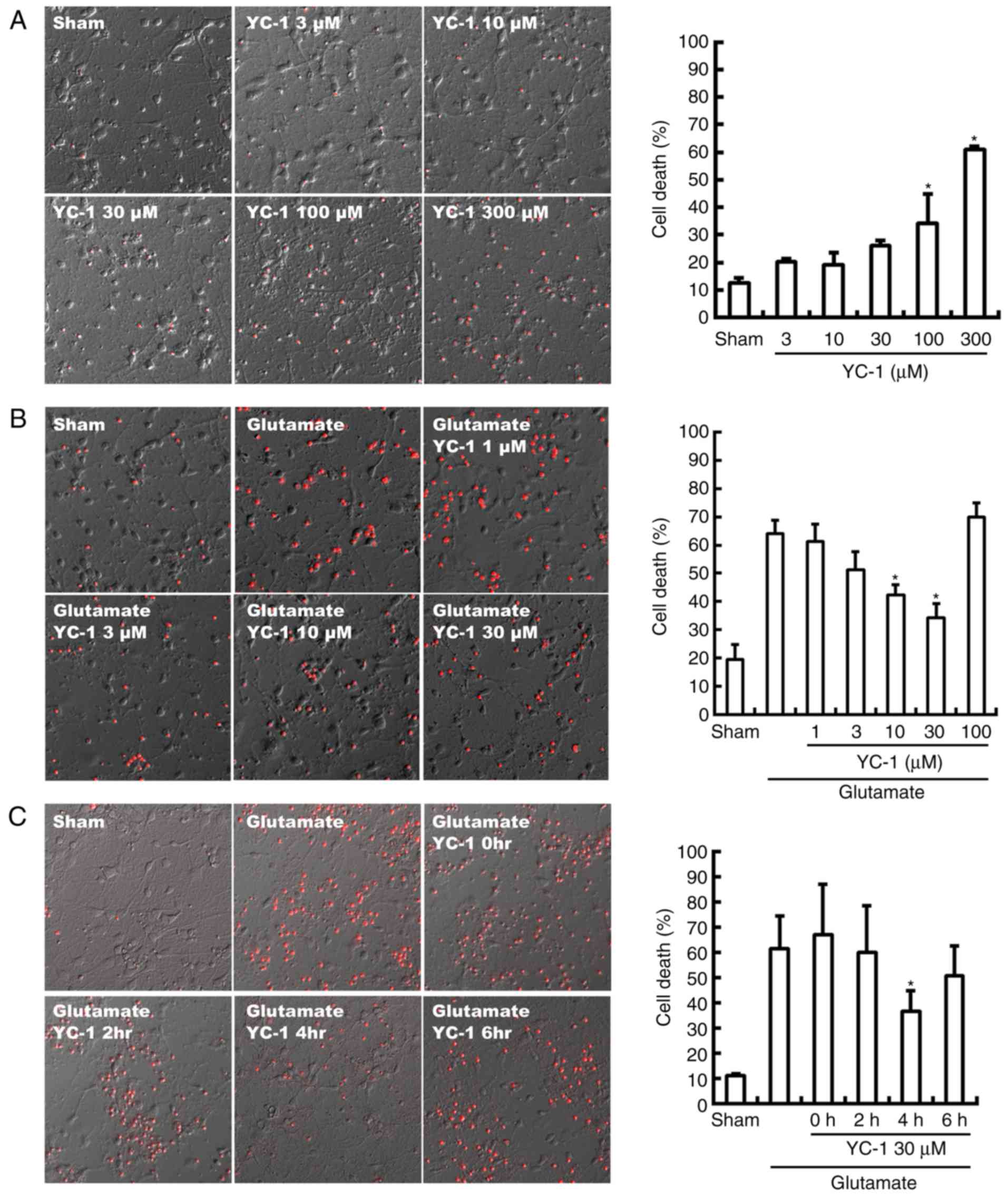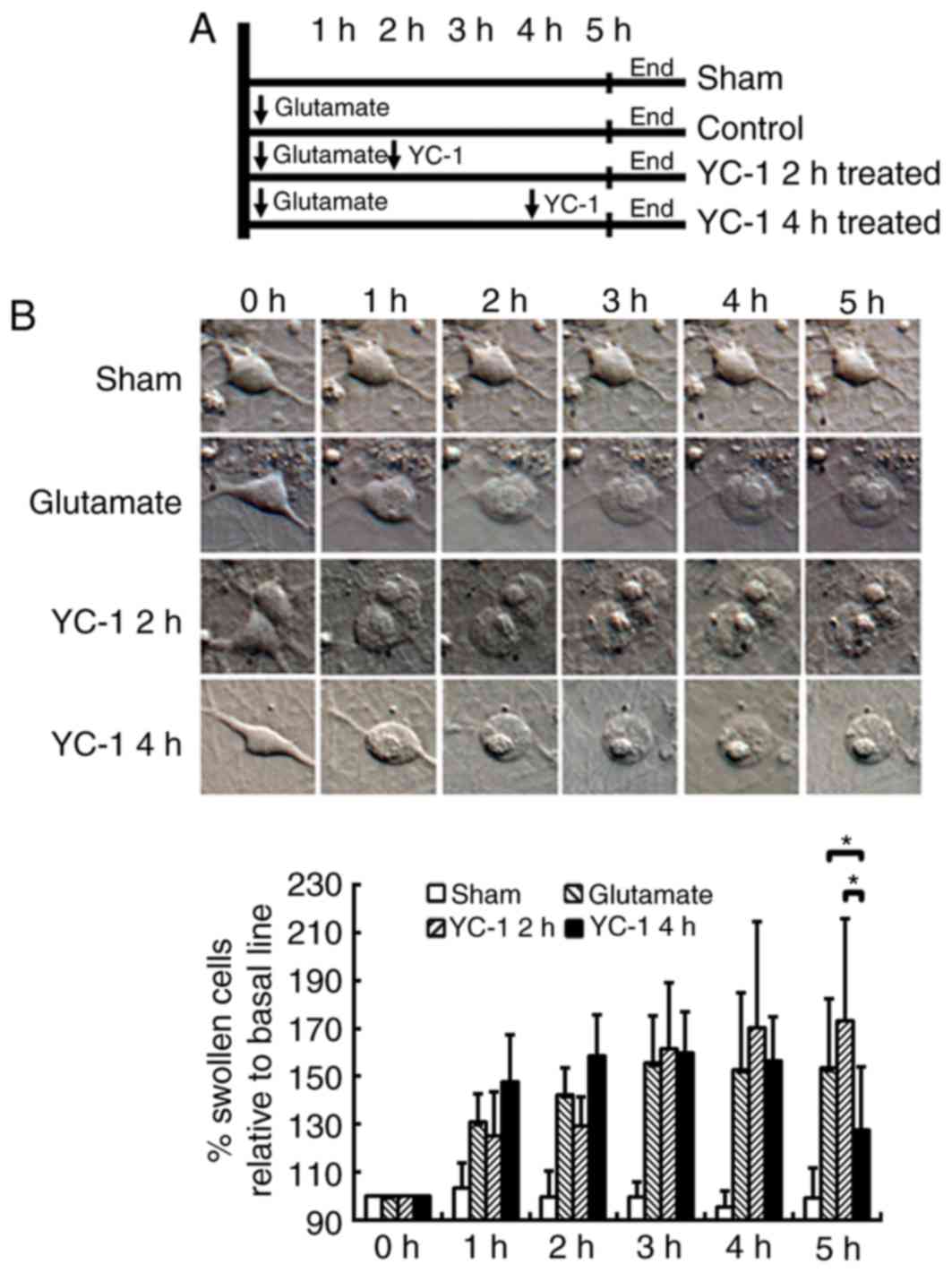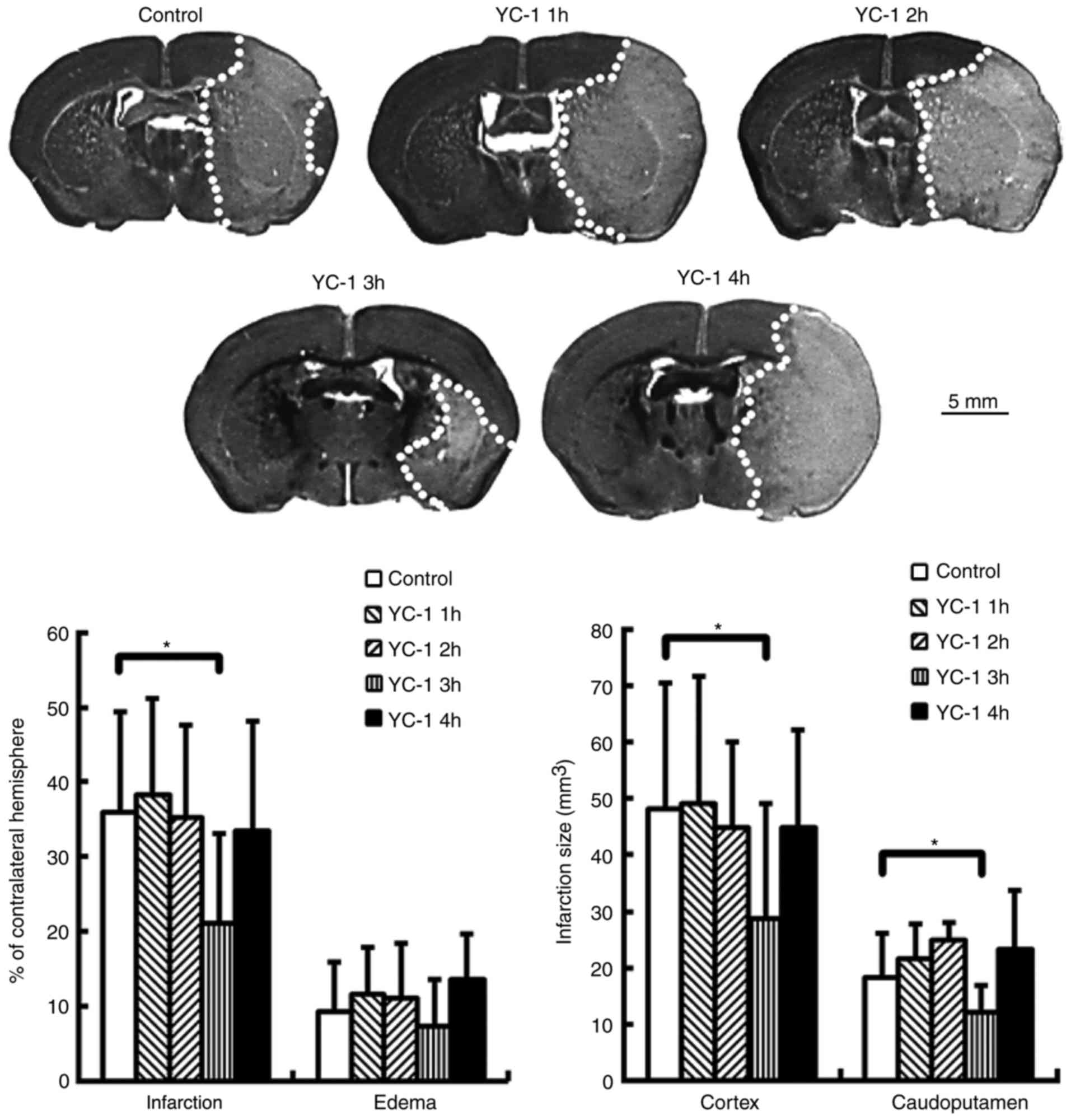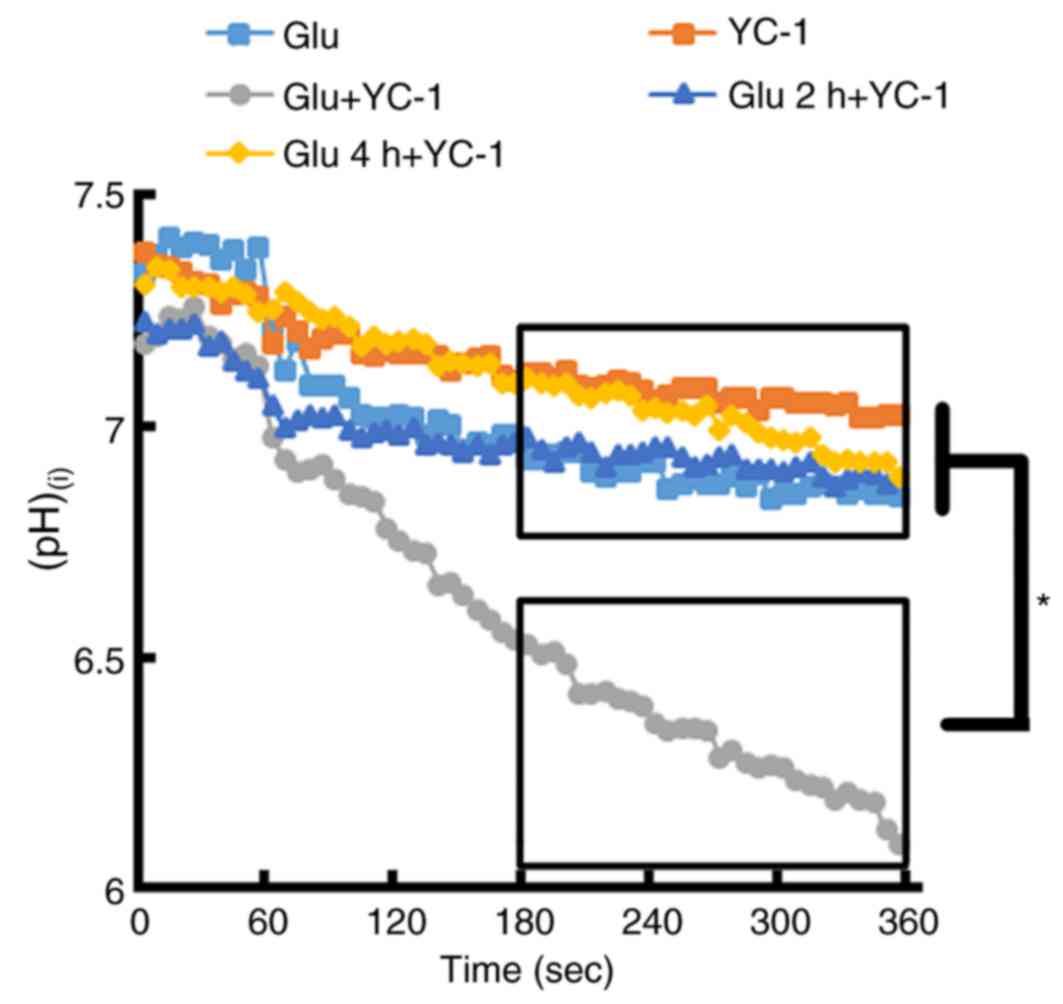|
1
|
O'Bryant Z, Vann KT and Xiong ZG:
Translational strategies for neuroprotection in ischemic
stroke-focusing on acid-sensing ion channel 1a. Transl Stroke Res.
5:59–68. 2014. View Article : Google Scholar : PubMed/NCBI
|
|
2
|
Lee EJ, Chen HY, Hung YC, Chen TY, Lee MY,
Yu SC, Chen YH, Chuang IC and Wu TS: Therapeutic window for
cinnamophilin following oxygen-glucose deprivation and transient
focal cerebral ischemia. Exp Neurol. 217:74–83. 2009. View Article : Google Scholar : PubMed/NCBI
|
|
3
|
Demaerschalk BM and Yip TR: Economic
benefit of increasing utilization of intravenous tissue plasminogen
activator for acute ischemic stroke in the United States. Stroke.
36:2500–2503. 2005. View Article : Google Scholar : PubMed/NCBI
|
|
4
|
Xiong ZG, Zhu XM, Chu XP, Minami M, Hey J,
Wei WL, MacDonald JF, Wemmie JA, Price MP, Welsh MJ and Simon RP:
Neuroprotection in ischemia: Blocking calcium-permeable
acid-sensing ion channels. Cell. 118:687–698. 2004. View Article : Google Scholar : PubMed/NCBI
|
|
5
|
Li MH, Leng TD, Feng XC, Yang T, Simon RP
and Xiong ZG: Modulation of acid-sensing ion channel 1a by
intracellular pH and its role in ischemic stroke. J Biol Chem.
291:18370–18383. 2016. View Article : Google Scholar : PubMed/NCBI
|
|
6
|
Mutch WA and Hansen AJ: Extracellular pH
changes during spreading depression and cerebral ischemia:
Mechanisms of brain pH regulation. J Cereb Blood Flow Metab.
4:17–27. 1984. View Article : Google Scholar : PubMed/NCBI
|
|
7
|
von Hanwehr R, Smith ML and Siesjö BK:
Extra- and intracellular pH during near-complete forebrain ischemia
in the rat. J Neurochem. 46:331–339. 1986. View Article : Google Scholar : PubMed/NCBI
|
|
8
|
Mari Y, Katnik C and Cuevas J: ASIC1a
channels are activated by endogenous protons during ischemia and
contribute to synergistic potentiation of intracellular Ca(2+)
overload during ischemia and acidosis. Cell Calcium. 48:70–82.
2010. View Article : Google Scholar : PubMed/NCBI
|
|
9
|
Szatkowski M and Attwell D: Triggering and
execution of neuronal death in brain ischaemia: Two phases of
glutamate release by different mechanisms. Trends Neurosci.
17:359–365. 1994. View Article : Google Scholar : PubMed/NCBI
|
|
10
|
Dubinsky JM: Intracellular calcium levels
during the period of delayed excitotoxicity. J Neurosci.
13:623–631. 1993. View Article : Google Scholar : PubMed/NCBI
|
|
11
|
Lee WT, Lin MH, Lee EJ, Hung YC, Tai SH,
Chen HY, Chen TY and Wu TS: Magnolol reduces glutamate-induced
neuronal excitotoxicity and protects against permanent focal
cerebral ischemia up to 4 hours. PLoS One. 7:e399522012. View Article : Google Scholar : PubMed/NCBI
|
|
12
|
Hwang TL, Hung HW, Kao SH, Teng CM, Wu CC
and Cheng SJ: Soluble guanylyl cyclase activator YC-1 inhibits
human neutrophil functions through a cGMP-independent but
cAMP-dependent pathway. Mol Pharmacol. 64:1419–1427. 2003.
View Article : Google Scholar : PubMed/NCBI
|
|
13
|
DeNiro M, Al-Halafi A, Al-Mohanna FH,
Alsmadi O and Al-Mohanna FA: Pleiotropic effects of YC-1
selectively inhibit pathological retinal neovascularization and
promote physiological revascularization in a mouse model of
oxygen-induced retinopathy. Mol Pharmacol. 77:348–367. 2010.
View Article : Google Scholar : PubMed/NCBI
|
|
14
|
Yan J, Zhou B, Taheri S and Shi H:
Differential effects of HIF-1 inhibition by YC-1 on the overall
outcome and blood-brain barrier damage in a rat model of ischemic
stroke. PLoS One. 6:e277982011. View Article : Google Scholar : PubMed/NCBI
|
|
15
|
Tai SH, Hung YC, Lee EJ, Lee AC, Chen TY,
Shen CC, Chen HY, Lee MY, Huang SY and Wu TS: Melatonin protects
against transient focal cerebral ischemia in both reproductively
active and estrogen-deficient female rats: The impact of
circulating estrogen on its hormetic dose-response. J Pineal Res.
50:292–303. 2011. View Article : Google Scholar : PubMed/NCBI
|
|
16
|
DeLorenzo RJ, Sun DA, Blair RE and Sombati
S: An in vitro model of stroke-induced epilepsy: Elucidation of the
roles of glutamate and calcium in the induction and maintenance of
stroke-induced epileptogenesis. Int Rev Neurobiol. 81:59–84. 2007.
View Article : Google Scholar : PubMed/NCBI
|
|
17
|
Trenholm S and Baldridge WH: The effect of
aminosulfonate buffers on the light responses and intracellular pH
of goldfish retinal horizontal cells. J Neurochem. 115:102–111.
2010. View Article : Google Scholar : PubMed/NCBI
|
|
18
|
Tai SH, Chen HY, Lee EJ, Chen TY, Lin HW,
Hung YC, Huang SY, Chen YH, Lee WT and Wu TS: Melatonin inhibits
postischemic matrix metalloproteinase-9 (MMP-9) activation via dual
modulation of plasminogen/plasmin system and endogenous MMP
inhibitor in mice subjected to transient focal cerebral ischemia. J
Pineal Res. 49:332–341. 2010. View Article : Google Scholar : PubMed/NCBI
|
|
19
|
Papadia S, Soriano FX, Léveillé F, Martel
MA, Dakin KA, Hansen HH, Kaindl A, Sifringer M, Fowler J, Stefovska
V, et al: Synaptic NMDA receptor activity boosts intrinsic
antioxidant defenses. Nat Neurosci. 11:476–487. 2008. View Article : Google Scholar : PubMed/NCBI
|
|
20
|
Alzheimer C: Na+ channels and Ca2+
channels of the cell membrane as targets of neuroprotective
substances. Adv Exp Med Biol. 513:161–181. 2002. View Article : Google Scholar : PubMed/NCBI
|
|
21
|
Yang X, Wang Y, Luo J, Liu S and Yang Z:
Protective effects of YC-1 against glutamate induced PC12 cell
apoptosis. Cell Mol Neurobiol. 31:303–311. 2011. View Article : Google Scholar : PubMed/NCBI
|
|
22
|
Wang WZ, Chu XP, Li MH, Seeds J, Simon RP
and Xiong ZG: Modulation of acid-sensing ion channel currents,
acid-induced increase of intracellular Ca2+, and acidosis-mediated
neuronal injury by intracellular pH. J Biol Chem. 281:29369–29378.
2006. View Article : Google Scholar : PubMed/NCBI
|
|
23
|
Jiang N, Wu J, Leng T, Yang T, Zhou Y,
Jiang Q, Wang B, Hu Y, Ji YH, Simon RP, et al: Region specific
contribution of ASIC2 to acidosis-and ischemia-induced neuronal
injury. J Cereb Blood Flow Metab. 37:528–540. 2017. View Article : Google Scholar : PubMed/NCBI
|















